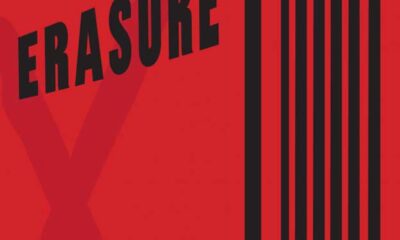Book Review
“My People”

Book Review by Dr. Brenda M. Greene
My People, Five Decades of Writing About Black Lives
By Charlayne Hunter-Gault
Harper Collins Publishers, 343.
The speaker in Dr. Margaret T. Burroughs’ poem “What Will Your Legacy Be?” asks what deeds have you done in your lifetime which will be left for you to be remembered by? Charlayne Hunter-Gault, the award-winning journalist who made history in 1961 when she, along with Hamilton Holmes, mounted a legal challenge that resulted in making her one of two students to integrate the University of Georgia, has a legacy that is devoted to speaking “truth to power.” She understands the significance of her pen and has written My People, Five Decades of Writing About Black Lives (Harper Collins, 2022), a moving chronicle of her life as a reporter.
Through essays, articles, and interviews in The New York Times, The New Yorker, and various magazines and journals, and in her role as a PBS NewsHour anchor and national correspondent, Hunter-Gault has spent more than half of her lifetime reporting on Civil Rights, Harlem, the Black Power Movement, the Apartheid Movement in South Africa, the Black Lives Matter Movement, the impact of COVID, the rise of Trump, and her personal life in Florida and Martha’s Vineyard. Nikole Hannah Jones informs readers in the foreword to the book that Charlayne Hunter-Gault “provided a template for me and countless other journalists in the world.”
Upon admission to Georgia University, she and Hampton are forcibly suspended for their own protection and they have to attend classes under guard. Readers embark on Hunter-Gault’s journey as they read of an attack by racists in her dorm room on her first night at the University. However, she is not deterred. Her ability to persevere and resist had begun before she entered college. As young activists, she and Hamilton had written for the Atlantic Inquirer on demands for racial justice throughout the country.
After obtaining her degree in journalism, Hunter-Gault moves to New York City and recognizing the trajectory of racism up and down the East Coast, she states: “So, along with my clothes, I packed my racial consciousness.” She ultimately becomes the first Black reporter for the “Talk of the Town” section in The New Yorker, and then a reporter at The New York Times, where she establishes the Harlem Bureau. Her reporting and persistence place her in a position to document levels of struggle for quality education, economic equity, self-determination, and social justice in communities representing Black people.
Hunter-Gault’s story of the Patterson School for Heritage and Learning, an African-American centered afterschool in Harlem, is an example of her skill in finding stories in New York City where people are educating young Black youth about the power, self-esteem, and success that comes from having knowledge of self. This story touched me for I was among the first group of teachers in 1971 selected to teach African American history, literature, and culture at the Patterson Heritage School to children in grades three to four.
A writer’s ability to craft prose that interweaves the personal and political takes a special kind of skill. Hunter-Gault achieves this balance as she writes of her experiences in meeting Lewis Michaux, the founder, aka, the Professor, of the famous Memorial Bookstore on the corner of 125th Street and Lenox Avenue or when she provides moving and inspirational accounts of freedom fighters, and civil rights icons such as Malcolm X, John Lewis, Julian Bond, Rosa Parks, Constance Baker Motley, Shirley Chisholm, and Gwen Ifill. Hunter-Gault also includes literary activists in her praise of liberation writers who have made a difference. Lorraine Hansberry, J.E. Franklin, and Phillis Wheatley are among those cited by her. Readers journey with her to South Africa and gain first-hand perspectives of her interactions with Nelson Mandela and freedom fighters who view the Civil Rights struggle in America as a blueprint and motivation for their struggle against Apartheid. They learn of the violent acts and imprisonment of journalists who give up their freedom to resist terrorism and of dictators who violate the freedom of people in African countries such as Ethiopia, Zimbabwe, and Nigeria.
My People, Five Decades of Writing About Black Lives is divided into six parts: Toward Justice and Equality, Then and Now; My Sisters; Community and Culture; A Single Garment of Destiny; The Road Less Traveled; and Honoring the Ancestors. This structure reflects a continuum of overlapping themes that intersect and resonate across the five decades of Hunter-Gault’s life.
As a politically and socially conscious journalist, Hunter-Gault has been at the frontline in reporting and documenting racial inequality and the complex experiences of Blacks in America. Her purpose has been a personal and moral one. In discussing the role of the journalist in this country, Nikole Hannah-Jones notes: “As long as the architect of racial inequality remains, so does the journalists’ mandate to investigate and report on it.” Hunter-Gault’s My People, Five Decades of Writing About Black Lives is an enduring legacy and a testament to this mandate.
Dr. Brenda M. Greene is Professor of English, Founder and Executive Director of the Center for Black Literature, and Senior Special Assistant to the Provost at Medgar Evers College, CUNY. For more information, visit https://www.drbrendamgreene.com







